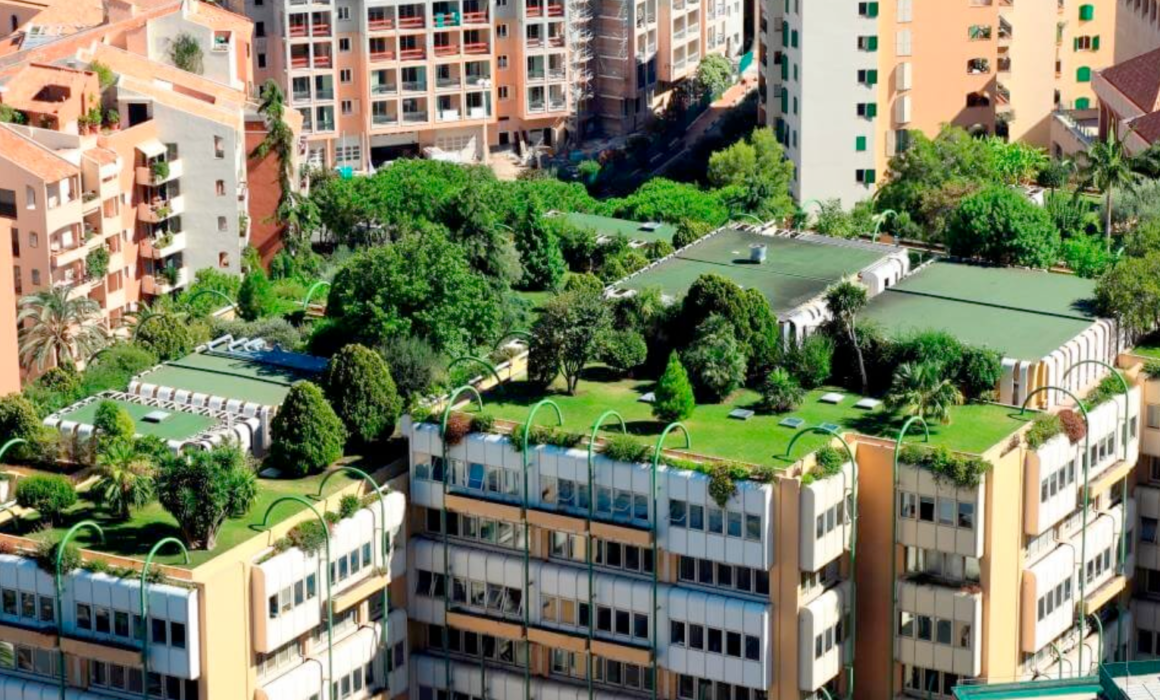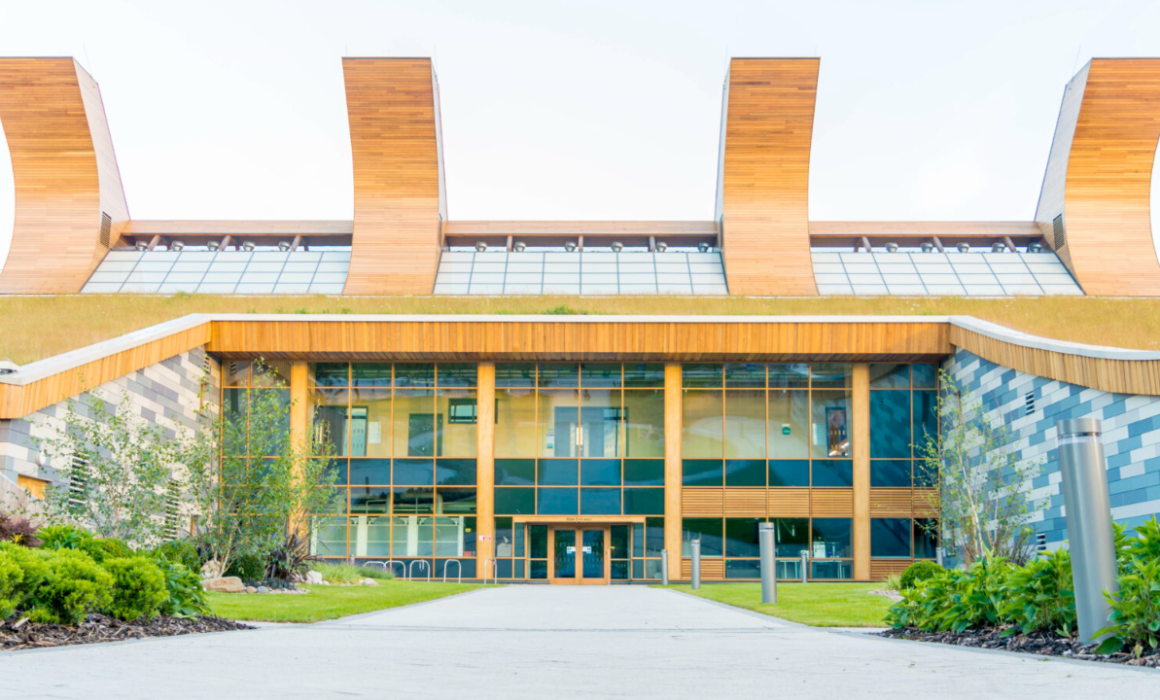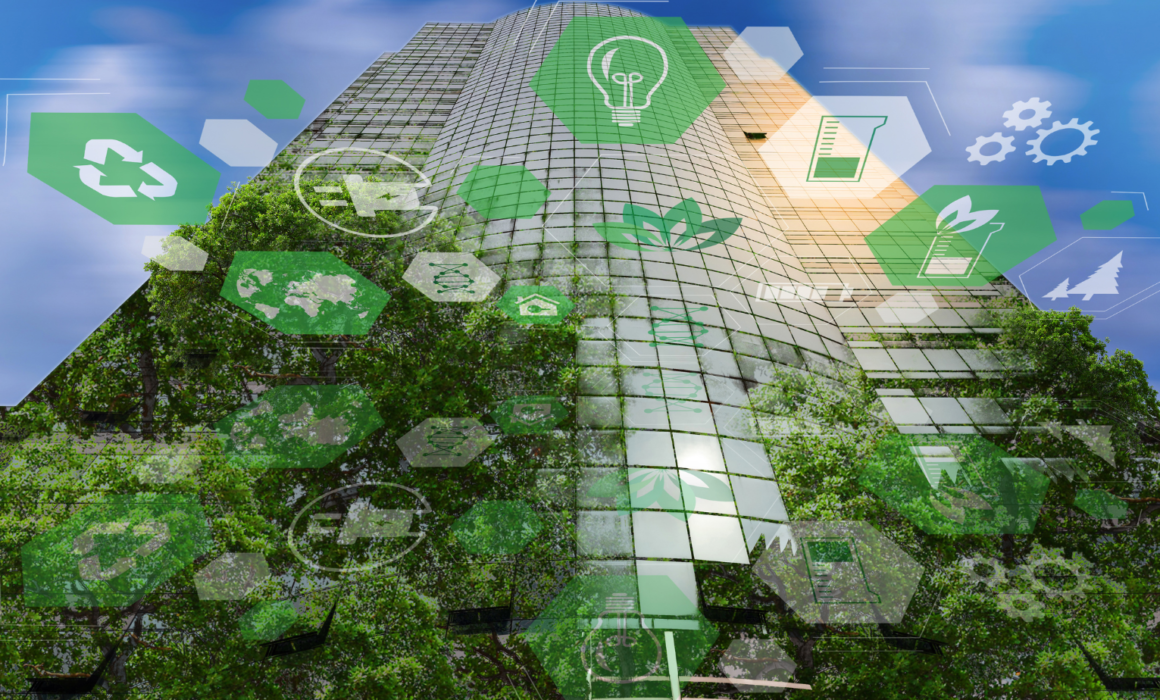How do green roofs make cities more sustainable?
Green roofs can be defined as green spaces on top of a building. This green space can be below, at, or above ground level, but in all cases, they exist separately from the ground. Green roofs can provide a wide range of public and private benefits and have been successfully installed in countries around the world.
A green roof system is an extension of the existing roof that involves high-quality waterproofing, a root repellent system, a drainage system, a filter fabric, a lightweight growing medium, and plants.
In North America, the benefits of green roof technologies are not yet fully understood and the market continues to mature, despite the efforts of industry leaders. But in Europe, these technologies are well established, as a direct result of government legislation and financial support in countries such as Germany, France, Austria, and Switzerland, among others.
Green roofs not only provide building owners with a proven return on investment but also represent opportunities for significant social, economic and environmental benefits, particularly in cities.
In general, green roofs provide a variety of environmental, facility, corporate and social benefits. Some of them are mentioned here.
Economic Benefits
Although installing a green roof often involves higher upfront costs than a traditional roof, there are many economic benefits that can offset this, such as improving property values and marketability, especially in urban areas with small green spaces.
According to a University of Michigan study that analyzed a variety of benefits of green roofs, including rainwater management, improved health benefits due to reduced pollution, and energy savings.
However, the economic benefits of any single green roof will depend on its design, geographic location, environment, and the building itself.
Acoustic insulation
Sound is a major distraction, especially in a commercial building. Workers don’t want to hear the din of heavy traffic outside their office, let alone at home. A green roof is an additional layer of insulation and will absorb up to 30% of ambient noise pollution.
Aesthetics
There is no doubt about it: a green roof is visually appealing and, in the case of a public building, it attracts attention. The days of gray concrete and steel are behind us. People want aesthetically pleasing architecture and green roofs often play an important role in the overall design.
Rainwater management
Green roofs reduce stormwater runoff. The growing medium and moisture retention mats on the roof absorb rainwater, acting as a sponge and buffering the drainage system. This allows water to be released through evaporation and stabilizes groundwater levels.
Temperature control
The increased insulation offered by green roofs can reduce the amount of energy needed to moderate the temperature of a building, as roofs are the site of the greatest heat loss in winter and the highest temperatures in summer.
Air quality
Urban areas are typically noted for their lack of vegetation, which leads to a buildup of carbon dioxide and other harmful pollutants. A green roof makes the most of unused space. Plants absorb pollutants and emit oxygen, improving air quality and helping the environment.
Classification of buildings
If you’re hoping to build a sustainable home or upgrade your building’s rating with green certification, a green roof is an excellent place to start. Even better if you choose plants native to your local geographic area.
Biodiversity
City centers and urban environments are often inhospitable to birds, insects, and other creatures, and a green roof helps promote biodiversity by attracting wildlife. Additional features, such as bird drinkers and beehives, can be added to increase the green impact of the roof and reduce the carbon footprint.
Increases the marketability of the building
Green roofs increase the marketability of the building. Various research shows that businesses in buildings with green roofs found it easier to recruit and retain employees and tenants compared to businesses in a building with a traditional roof.
Local Job Creation
The growth of green roof markets provides new job opportunities related to manufacturing, plant growth, design, installation, and maintenance.
There is significant potential for new growth in dense urban areas that previously could not be used.
New Service Spaces
Green roofs help achieve smart growth principles and positively grow the urban environment by increasing amenities and green space and reducing community resistance to infill projects. Green roofs can serve any number of functions and uses.
Therefore, green roofs also contribute to the sustainability of a building. A green roof significantly reduces the need for air conditioning in summer and provides insulation in winter. Due to the reduced need for air conditioning in summer and less heating in winter, a green roof significantly reduces energy consumption.
So, given all the benefits, why aren’t all roofs green? Outside the United States, green roofs are much more prevalent. Despite their many benefits, a major obstacle is an initial expense; these typically cost two to three times as much as a non-green roof.


